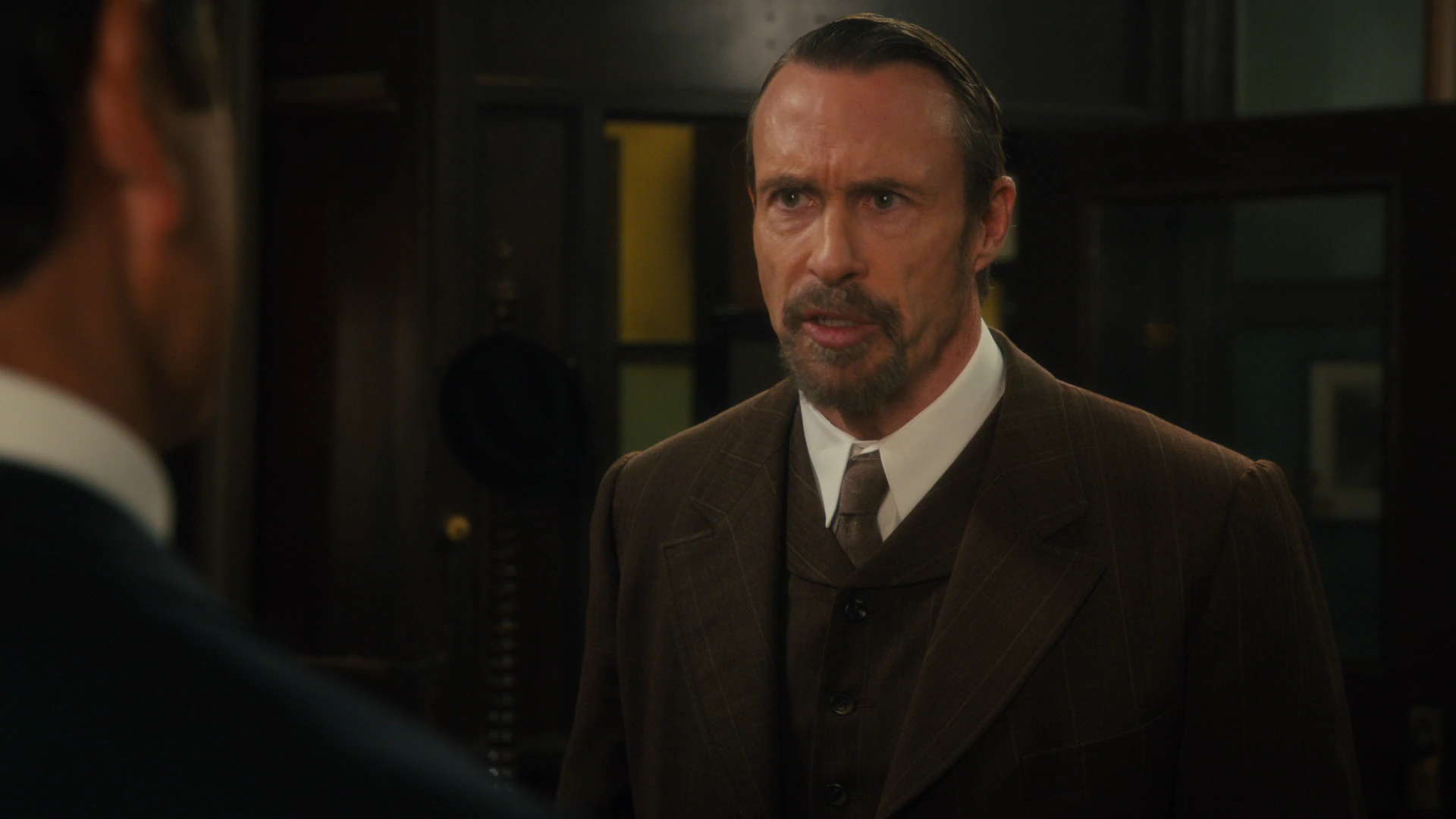S18 E15 – When Irish Eyes are Lying
I wish the world were a bit simpler sometimes, that's all

Spoiler Warning: Do not read on if you haven't watched this episode!!
Oh boy, Peter Mitchell has done it now! Murdoch Mysteries “fans” complaining about the wokeness of the show will likely have a meltdown over this instalment, which confronts bigotry and discrimination in all its forms and proves that you need to play with a full deck of cards if you want to win the game. I was gripped from the start by this episode, which reminded me of how Star Trek’s Gene Roddenberry used to address current social and political issues by setting stories in a different era.
While Murdoch Mysteries has never shied away from showing the prejudice that was prevalent in early twentieth-century Toronto, this time it is tackled head-on in a way I have not quite seen before. Of course, anti-Catholic sentiments were addressed as early as the second episode of the series, aptly titled The Glass Ceiling, where Detective Murdoch (Yannick Bisson) is denied a promotion because of his religion—and these sentiments have been touched upon many times since. The same goes for the hatred and intolerance directed at individuals or groups based on race, gender, or sexual orientation. But while Murdoch Mysteries certainly does not shy away from these issues, social commentary is rarely front and center. In When Irish Eyes Are Lying, the attempted murder of Protestant hate-monger Jimmy Mitchell (Mark Griffin) gives writers Peter Mitchell and Nick West the opportunity to zero in on these issues and show us how little we’ve progressed a century later—just look at the familiar fist pump Jimmy Mitchell gives after a failed attempt on his life.
No Pamphlet
Gene Roddenberry was famous for saying that historical and futuristic settings create a safe distance from the present, allowing for deeper reflection on contemporary affairs. This approach to storytelling led to some of the best Star Trek episodes, but it also carried the danger of becoming a pamphlet. Mitchell (Peter, not Jimmy) and West manage to sidestep this danger by writing a compelling mystery and fleshing out two of the main characters: Constable Teddy Roberts (Kataem O’Connor) and—surprisingly, after 18 years—William Murdoch.
It also helps that we’re not hit over the head with the message that there’s strength in diversity. In a masterclass of ‘show, don’t tell,’ we see that the Catholic is the best detective, that the gay man is the one who gets to the truth, that the Black guy is a great marksman, and that it’s the woman who interprets the law so that both sides are treated equally. I loved the scene where Mitchell (Jimmy, not Peter) had a full-on conniption upon meeting Inspector Choi (Paul Sun-Hyung Lee). And no, there wasn’t an Asian inspector in turn-of-the-century Canada. Who cares? This isn’t the History Channel. I’m sure they didn’t use GPS either, or a taser, or any of the other technology Murdoch invented. Oh wait, he didn’t really invent these (he’s not real). Rant over…
Sum Greater Than Its Parts
Nicely mirroring the story, everyone involved in making this episode was firing on all cylinders, creating a sum greater than its parts. Prop Monkey Craig Grant provides Murdoch with a couple of neat inventions, Robert Carli’s music enhances every scene as usual, and costume designer Joanna Syrokomla makes 1912 (or is it 1913 by now?) Toronto truly come alive. Director Gary Harvey comes up with wonderful shots, finding camera angles unlike any we’ve seen before. I particularly liked the scene in the interrogation room towards the end of the episode, along with the moment where Murdoch kneels by the victim in the street. The shot of Choi in the background putting on his coat while Murdoch and Mitchell (Jimmy, not Peter) have one of their face-offs was also memorable. There are quite a few shots where people look down from a window or where the characters are filmed from above—Murdoch and Watts entering the interrogation room with the camera way up over their heads makes for a great visual. Harvey’s direction is further enhanced by crisp editing; the sequence where they lay the trap for the killer is especially well put together.
Great Acting
As I mentioned above, the characters of Roberts and Murdoch are further unpacked. Since we only met Teddy Roberts seven episodes ago, it’s nice to learn more about him. Up until now, he seemed to be a bright-eyed, somewhat naïve young man from the countryside. However, seeing him afraid for his life after bedding a white woman reveals that he is a bit wiser to the ways of the world than we originally thought. Kataem O’Connor really made me feel his fear and managed to convey a deep sadness and sense of distrust in his character that no young man his age should have.
After 18 seasons, it might seem that we know all there is to know about William Murdoch and how he would respond to any situation the writers place him in. One of the great pleasures of this episode is that both the writers and Yannick Bisson can still impress us by deepening his character. We know he is a deeply religious man, and he usually seems more or less resigned to the fact that, as a Catholic, he will not rise very high in the Toronto Constabulary. Here, it’s made clear that Murdoch is an officer of the law first and a Catholic second. Hard as it may be, we don’t choose who we are bound to protect. However, we also see that this restraint does not come easily. Much of that is not in the words spoken by Murdoch, but in Bisson’s subtle acting. A slight raising of his voice, the way he walks a little more stiffly after being spoken down to, and the set of his jaws: you can feel the restrained anger. His understated acting isn’t restricted to the serious scenes either. Just look at the tiniest hint of a smug smile when he takes the piece of paper out of the dead drop stone. We really should not take for granted how great a character this is and how good an actor he is.
Almost Perfect
For all there is to enjoy in this episode—I haven’t even touched on the solid guest stars, the lovely Irish lilts, Effie using her power for good, or Watts’s sandwich—it’s not quite a ten out of ten. For one thing, Mitchell (Peter, not Jimmy) and West might have been a little less generous with the hints. First, Roberts says, A good hunter and a good butcher are often one and the same, then Keyes adds, My shop’s got the best mutton for your money—he might as well have an arrow pointing to him. Also, Laoise Ryan (Ruth Goodwin) being either drinking or drunk might come off as a bit of a stereotype about the Irish. And speaking of the Irish: why would Effie Crabtree (Clare McConnell) suddenly have Irish roots? She could have been outraged by the injustice of it all without conveniently having a personal stake in it. Still, these are minor points that didn’t prevent me from being on the edge of my seat from start to finish.
Bits and Bobs
This Episode's Hat:



